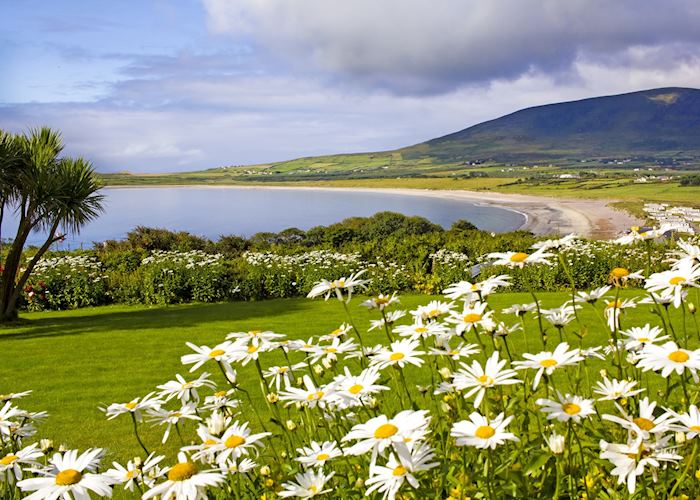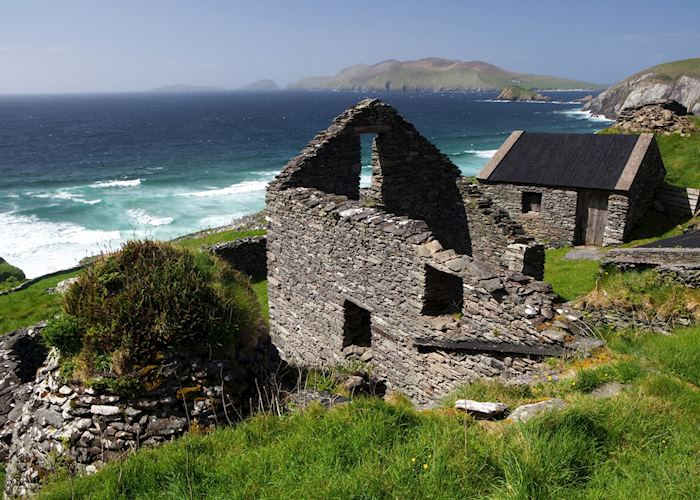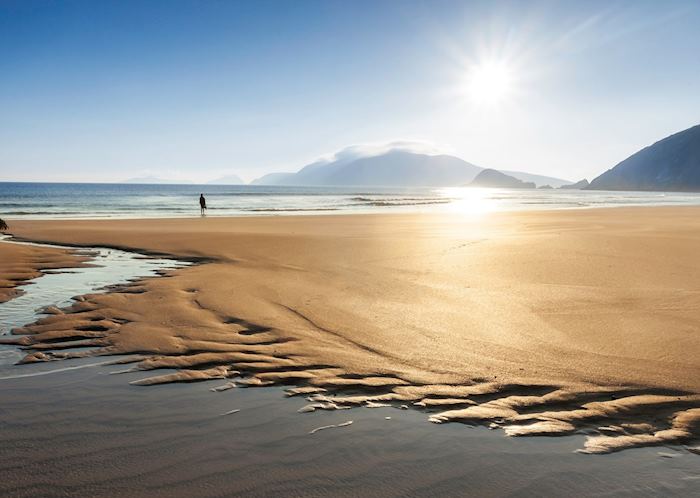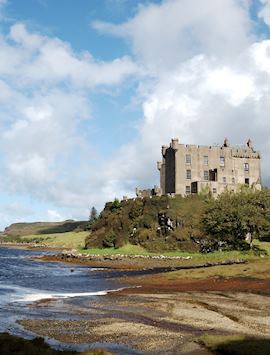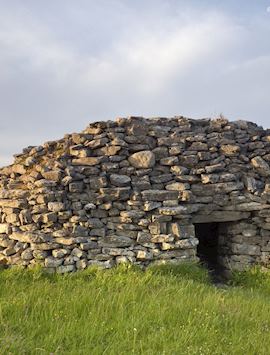
Arguably even more beautiful than the Ring of Kerry, the Dingle Peninsula sits just north of Killarney and has a spectacular landscape of rocky bays, sandy beaches and rugged hills. Slea Head, the westernmost point, has the most dramatic coastline scenery of the peninsula and views toward the Skellig and Blasket Islands.
In addition to its natural beauty, the peninsula is awash with ancient archaeological sites including early medieval ring forts, Neolithic standing stones, wedge tombs and striking beehive huts. This fascinating three-hour tour in the company of a local archaeologist brings the landscape and its ancient people to life. After your tour, you’ll have more time to explore the peninsula unaccompanied before returning to Dingle.
You'll meet your private guide, a prominent local archaeologist in Dingle town, who’ll guide you to some of the peninsula’s most significant archaeological treasures. Most of these sites are hidden away on private farming land and are therefore usually inaccessible. But with your guide you can explore thoroughly as she explains the history and importance of the sites themselves and the area in general.
Your guide will decide on the day which particular archaeological sites to take you to, based on the weather, how busy the roads are and your specific interests. However, you are likely to visit some or all of the following sites.
Just outside Dingle in a farmer’s fields is St Manchan’s Oratory, an early Christian site overlooking Dingle Bay and Mount Brandon. This dry-stone-walled structure is accompanied by several ogham stones which are inscribed with this early medieval Irish alphabet.
Heading clockwise around the peninsula you'll come to Slea Head where several beehive houses on a family farm date back to the 8th or 9th century. These distinctive domed structures are built from dry stone walls, typically either roofed in stone or thatch. While here you may also get to see the farmer at work with his sheepdog.
Farther along, the road continues to narrow as it rounds a rocky corner, marked by a large white cross. This is the southernmost point of the peninsula, and affords your first spectacular views of the Blasket Islands. Beyond here are a series of tiny fishing villages, picturesque beaches and coves, all overlooking the islands.
Farther around the peninsula is Riasc, an early Christian monastic complex containing an oratory, a burial ground, several stone huts and a kiln used for drying corn. It is best known, however, for its intricately carved cross stone which has Christian, Celtic and Classical inscriptions.
Close by is the Gallarus Oratory. This is a distinctive stone building in the shape of an upturned boat constructed using an elaborate dry stone walling technique. Its original purpose is not known, though it is thought to have been an early Christian church which also served as a shelter for pilgrims. It’s a highly impressive structure and a subject of local folklore as well as an early work by Irish poet Seamus Heaney.
Nearby, Caherdorgan Stone Fort is a national monument dating back to the 8th or 9th century AD. An enclosed stone walled site, it contains an underground passage (now blocked up) and five circular stone huts. The site also commands an excellent view across the land toward the Blasket Islands.
In the same area is Kilmalkedar Church, a 12th-century Romanesque church associated with St Brendan. Inside the church are several interesting details including intricate arches and a carved head. The church grounds also include a large ogham stone, an ancient sun dial and a complex alphabet stone.
The tour includes time to stop for lunch (not included), and we can offer suggestions of good places to eat locally. At the end of the day you’ll return to Dingle with your guide.
who's been there
-
617-223-4521617-223-4757
- Make an inquiry
Photos of Dingle Peninsula with a local archaeologist
Experience it for yourself
You can enjoy this activity as part of the suggested tours below, or we can weave it into a trip shaped entirely around you.
